Are you planning a trip to the stunning landscapes of northern Vietnam? Understanding the nuances between provinces like Tuyen Quang, Ha Giang, and Bac Kan can greatly enhance your travel experience. With SIXT.VN, your adventure will be smooth and memorable. Let’s explore what sets these regions apart and how to make the most of your journey, ensuring an unforgettable exploration of Vietnamese culture and scenery.
1. What Defines the Landscape Transition When Moving From Tuyen Quang to Ha Giang or Bac Kan?
The landscape dramatically shifts from the lush, rolling hills of Tuyen Quang to the towering, rugged mountains of Ha Giang and the serene, lake-dotted scenery of Bac Kan.
- Tuyen Quang: Known for its verdant tea plantations and expansive rice fields, Tuyen Quang offers a gentle introduction to the northern highlands.
- Ha Giang: As you cross into Ha Giang, prepare to be awestruck by the imposing limestone karsts, deep gorges, and winding roads of the famous Ha Giang Loop.
- Bac Kan: In contrast, Bac Kan presents a more tranquil setting with its dense forests, Ba Be Lake, and winding rivers, perfect for nature lovers.
2. How Does the Cultural Experience Differ Between These Provinces?
Each province boasts a unique cultural tapestry woven from its diverse ethnic communities.
- Tuyen Quang: Predominantly Kinh, Tuyen Quang offers a blend of Vietnamese traditions with local Tay and San Chi influences.
- Ha Giang: Home to over a dozen ethnic groups, including the Hmong, Dao, and Tay, Ha Giang is a melting pot of vibrant cultures, each with its distinct language, attire, and customs.
- Bac Kan: With a strong presence of the Tay and Nung ethnic groups, Bac Kan offers a more intimate cultural experience centered around its traditional villages and festivals.
3. What Distinguishes the Road Conditions and Accessibility?
Navigating these provinces requires understanding their varied road conditions.
- Tuyen Quang: Generally, Tuyen Quang has well-maintained roads, making it easily accessible by car or bus.
- Ha Giang: The roads in Ha Giang, particularly the Ha Giang Loop, are more challenging, with steep passes and winding routes best suited for experienced motorbike riders or guided tours.
- Bac Kan: While some roads in Bac Kan are well-maintained, others can be rough, especially in remote areas, making a sturdy vehicle or local transport preferable.
4. What Types of Accommodation and Tourism Services Are Available in Each Province?
The availability of accommodation and services varies across these provinces.
- Tuyen Quang: Offers a range of hotels and guesthouses, catering to both domestic and international tourists.
- Ha Giang: Known for its homestays, Ha Giang provides an immersive cultural experience alongside budget-friendly accommodations and a growing number of hotels.
- Bac Kan: Primarily focused on eco-tourism, Bac Kan features guesthouses and homestays that emphasize sustainable travel and local experiences.
5. How Does the Cuisine Vary Across These Northern Provinces?
Each province offers distinct culinary delights reflecting its local ingredients and ethnic traditions.
- Tuyen Quang: Known for its com lam (rice cooked in bamboo tubes) and various grilled meats, Tuyen Quang offers hearty and flavorful dishes.
- Ha Giang: Specializes in thang co (a traditional Hmong stew), buckwheat cakes, and black chicken, providing adventurous eaters with unique tastes.
- Bac Kan: Features dishes like khau nhuc (braised pork belly) and grilled fish from Ba Be Lake, emphasizing fresh, local ingredients.
6. What Key Historical and Cultural Sites Can Be Found in Each Province?
Exploring the historical and cultural sites offers deeper insights into each region.
- Tuyen Quang: Features the Tan Trao Historical Site, a significant location during the August Revolution, and various ancient temples.
- Ha Giang: Home to the Dong Van Karst Plateau Geopark, a UNESCO World Heritage site, and the ancient Meo King’s Palace, showcasing unique geological formations and historical significance.
- Bac Kan: Offers the Ba Be National Park, known for its biodiversity and stunning natural landscapes, along with historical sites like the Pac Ngoi ancient village.
7. How Do the Local Markets Differ in Terms of Products and Atmosphere?
Visiting local markets provides a glimpse into daily life and local specialties.
- Tuyen Quang: Local markets offer a variety of agricultural products, textiles, and household goods, reflecting the Kinh majority.
- Ha Giang: Markets are vibrant and colorful, showcasing ethnic crafts, traditional clothing, and local produce like honey and medicinal herbs.
- Bac Kan: Markets are smaller and more focused on local needs, featuring forest products, handmade tools, and fresh fish from Ba Be Lake.
8. What Specific Activities and Attractions Are Unique to Each Province?
Each province offers unique activities and attractions tailored to its landscape and culture.
- Tuyen Quang: Offers tea plantation tours, historical site visits, and river cruises.
- Ha Giang: Known for the Ha Giang Loop motorbike adventure, trekking, and exploring ethnic villages.
- Bac Kan: Features boat trips on Ba Be Lake, hiking in the national park, and visiting waterfalls and caves.
9. How Can Visitors Ensure Respectful and Sustainable Tourism Practices in These Regions?
Practicing responsible tourism helps preserve the local culture and environment.
- Tuyen Quang: Support local businesses, respect historical sites, and participate in community-based tourism initiatives.
- Ha Giang: Stay in locally-owned homestays, hire local guides, and avoid littering to minimize your impact.
- Bac Kan: Engage in eco-friendly activities, respect wildlife, and support conservation efforts in Ba Be National Park.
10. What Travel Resources and Services Does SIXT.VN Provide to Enhance a Trip to These Provinces?
SIXT.VN offers a comprehensive range of services to ensure a smooth and enjoyable trip.
- Tuyen Quang: Convenient airport transfers, car rentals for exploring the province, and hotel booking assistance.
- Ha Giang: Motorbike rentals with reliable support, guided tours of the Ha Giang Loop, and comfortable transportation options.
- Bac Kan: Eco-tourism packages, transportation to Ba Be Lake, and assistance with booking sustainable accommodations.
11. What Type of Terrain Can Travelers Expect to Encounter in Tuyen Quang, Ha Giang and Bac Kan?
Tuyen Quang is characterized by its rolling hills, tea plantations, and rice paddies. This makes it a relatively easy area to traverse, especially for those who prefer less strenuous travel.
Ha Giang, on the other hand, presents a stark contrast with its dramatic, rugged mountains, deep valleys, and towering limestone karsts. The terrain here is much more challenging, requiring careful navigation and physical endurance, particularly when undertaking the famous Ha Giang Loop.
Bac Kan offers a middle ground with its mix of forested hills, serene lakes like Ba Be, and winding rivers. The terrain is less extreme than Ha Giang, making it suitable for more relaxed exploration while still providing opportunities for adventure in its more remote areas.
12. How Do the Ethnic Cultures Differ Between These Three Provinces?
Each province offers a unique glimpse into the diverse ethnic tapestry of Vietnam, with distinct cultural practices and traditions.
Tuyen Quang is primarily inhabited by the Kinh majority, but also has a significant presence of Tay and San Chi ethnic groups. This blend creates a cultural landscape where traditional Vietnamese customs are interwoven with unique local influences.
Ha Giang is a melting pot of cultures, home to over a dozen different ethnic groups, including the Hmong, Dao, Tay, and Lo Lo. Each group has its own language, traditional clothing, and customs, making Ha Giang a fascinating destination for cultural immersion.
Bac Kan is predominantly inhabited by the Tay and Nung ethnic groups. These communities have a strong connection to the land and their traditional way of life, which is reflected in their architecture, agriculture, and local festivals.
13. What Specific Local Products Are Unique to Each Province?
Exploring the local products of each province provides a taste of its unique identity and agricultural bounty.
Tuyen Quang is famous for its high-quality tea, especially the Shan Tuyet variety, known for its delicate flavor and aroma. Other notable products include oranges, grapefruit and delicious honey.
Ha Giang is known for its buckwheat, which is used to make cakes and other local delicacies. Other unique products include local honey, medicinal herbs, and intricately woven textiles made by the local ethnic groups.
Bac Kan is famous for its Ba Be Lake fish, which is grilled or used in local dishes. Other local specialties include forest products like mushrooms and bamboo shoots, as well as handmade tools and crafts.
14. How Do the Weather Patterns Differ Across the Three Provinces?
Understanding the weather patterns in each province is essential for planning a comfortable and enjoyable trip.
Tuyen Quang experiences a subtropical climate with distinct wet and dry seasons. The weather is generally mild and pleasant, with average temperatures ranging from 15°C to 28°C.
Ha Giang has a more mountainous climate with cooler temperatures and higher humidity. The weather can be unpredictable, with frequent fog and rain, especially during the wet season.
Bac Kan shares a similar climate with Tuyen Quang but is slightly cooler and wetter due to its higher elevation and dense forests.
15. What Travel Considerations Should Be Kept in Mind When Crossing from Tuyen Quang into Ha Giang or Bac Kan?
Crossing from Tuyen Quang into Ha Giang or Bac Kan requires some thoughtful travel considerations to ensure a smooth and enjoyable trip.
If you’re heading to Ha Giang, it’s crucial to be prepared for challenging road conditions, especially if you plan to ride the Ha Giang Loop. Ensure you have appropriate transportation or book a guided tour. Also, pack for cooler temperatures and potentially wet weather.
For those traveling to Bac Kan, consider the more limited tourism infrastructure and accommodation options, especially in remote areas.
16. What Are Some Budget-Friendly Tips for Traveling Through Tuyen Quang, Ha Giang and Bac Kan?
Traveling through Tuyen Quang, Ha Giang, and Bac Kan can be an enriching experience, and it doesn’t have to break the bank. Here are some budget-friendly tips to help you make the most of your journey.
Tuyen Quang:
Opt for local guesthouses or homestays over international hotels to save on accommodation costs.
Eat at local eateries and markets for affordable and authentic Vietnamese cuisine. Try the delicious cơm lam (rice cooked in bamboo tubes) for a budget-friendly treat.
Take advantage of free activities such as exploring the Tan Trao Historical Site and visiting local temples.
Use public transportation like buses to get around, which are significantly cheaper than renting a car or hiring a private taxi.
Ha Giang:
Stay in homestays in ethnic minority villages for a unique cultural experience at a fraction of the cost of hotels.
Eat at local markets and street food stalls to sample traditional dishes like thang co (horse meat stew) and buckwheat cakes without overspending.
Consider renting a motorbike and exploring the Ha Giang Loop independently, but only if you are an experienced rider. Otherwise, opt for a guided tour to ensure safety and a comprehensive experience.
Visit free attractions like the Dong Van Karst Plateau Geopark and enjoy the breathtaking views without any entrance fees.
Bac Kan:
Choose guesthouses or family-run accommodations over luxury resorts to save on lodging expenses.
Dine at local restaurants and markets to savor regional specialties like khau nhuc (braised pork belly) and grilled fish from Ba Be Lake at affordable prices.
Enjoy nature-based activities such as hiking in Ba Be National Park, visiting local waterfalls, and exploring the stunning landscapes.
Use local buses or shared taxis to travel between towns, which are more budget-friendly than private transportation options.
17. How Can Visitors Contribute to the Local Economies of These Provinces?
Supporting the local economies of Tuyen Quang, Ha Giang, and Bac Kan is a great way to ensure that tourism benefits the communities that call these provinces home.
When visiting Tuyen Quang, make it a point to purchase local tea, oranges, and other agricultural products directly from farmers and local markets. Support family-run businesses, guesthouses, and restaurants by choosing them over international chains.
In Ha Giang, prioritize staying in homestays run by ethnic minority families. Hire local guides for trekking and motorbike tours, and purchase handmade crafts and textiles directly from artisans.
When traveling through Bac Kan, stay in locally-owned accommodations and eat at family-run restaurants. Buy fish from Ba Be Lake and support local vendors by purchasing their unique forest products.
18. What Safety Precautions Should Visitors Take When Traveling in These Areas?
Ensuring your safety while exploring Tuyen Quang, Ha Giang, and Bac Kan is essential for a worry-free trip.
Tuyen Quang:
Be aware of traffic conditions, especially in urban areas, and follow local traffic laws.
Take precautions against petty theft, particularly in crowded markets and tourist spots.
Ha Giang:
If riding a motorbike, always wear a helmet and appropriate protective gear. Be extremely cautious on the Ha Giang Loop, as road conditions can be challenging.
Check weather conditions before embarking on any treks or motorbike rides, and be prepared for sudden changes.
Bac Kan:
Exercise caution when hiking in Ba Be National Park, and stay on marked trails to avoid getting lost.
Be aware of water safety if swimming or boating on Ba Be Lake, and use appropriate safety equipment.
19. What Types of Cultural Etiquette Should Visitors Be Aware Of?
Understanding and respecting local cultural etiquette will greatly enrich your travel experience in Tuyen Quang, Ha Giang, and Bac Kan.
In Tuyen Quang, dress modestly when visiting temples and historical sites, and be respectful of local customs and traditions.
In Ha Giang, always ask for permission before taking photos of people, especially in ethnic minority villages.
When visiting Bac Kan, dress modestly when visiting temples and historical sites, and be mindful of local customs and traditions.
20. How Do SIXT.VN’s Services Cater Specifically to These Differences?
SIXT.VN’s services are designed to cater specifically to the unique characteristics of Tuyen Quang, Ha Giang, and Bac Kan.
Tuyen Quang:
SIXT.VN provides reliable airport transfer services to ensure a smooth arrival and departure. They also offer car rental options, allowing you to explore the province at your own pace, with comfortable vehicles suitable for the well-maintained roads.
Ha Giang:
SIXT.VN offers motorbike rentals, as well as guided tours that can enhance safety.
Bac Kan:
SIXT.VN offers eco-tourism packages designed to support local accommodations.
By understanding these key differences and utilizing services like SIXT.VN, travelers can ensure a richer, more meaningful exploration of northern Vietnam. Ready to start your adventure? Contact SIXT.VN today to plan your perfect trip and experience the best of Vietnam’s northern landscapes and cultures. Let SIXT.VN help you create memories that will last a lifetime, offering personalized advice and dependable services to make your travel dreams come true.
Address: 260 Cau Giay, Hanoi, Vietnam
Hotline/Whatsapp: +84 986 244 358
Website: SIXT.VN
 Tuyen Quang, Vietnam
Tuyen Quang, Vietnam
Landscape transition from Tuyen Quang to Ha Giang shows significant changes.
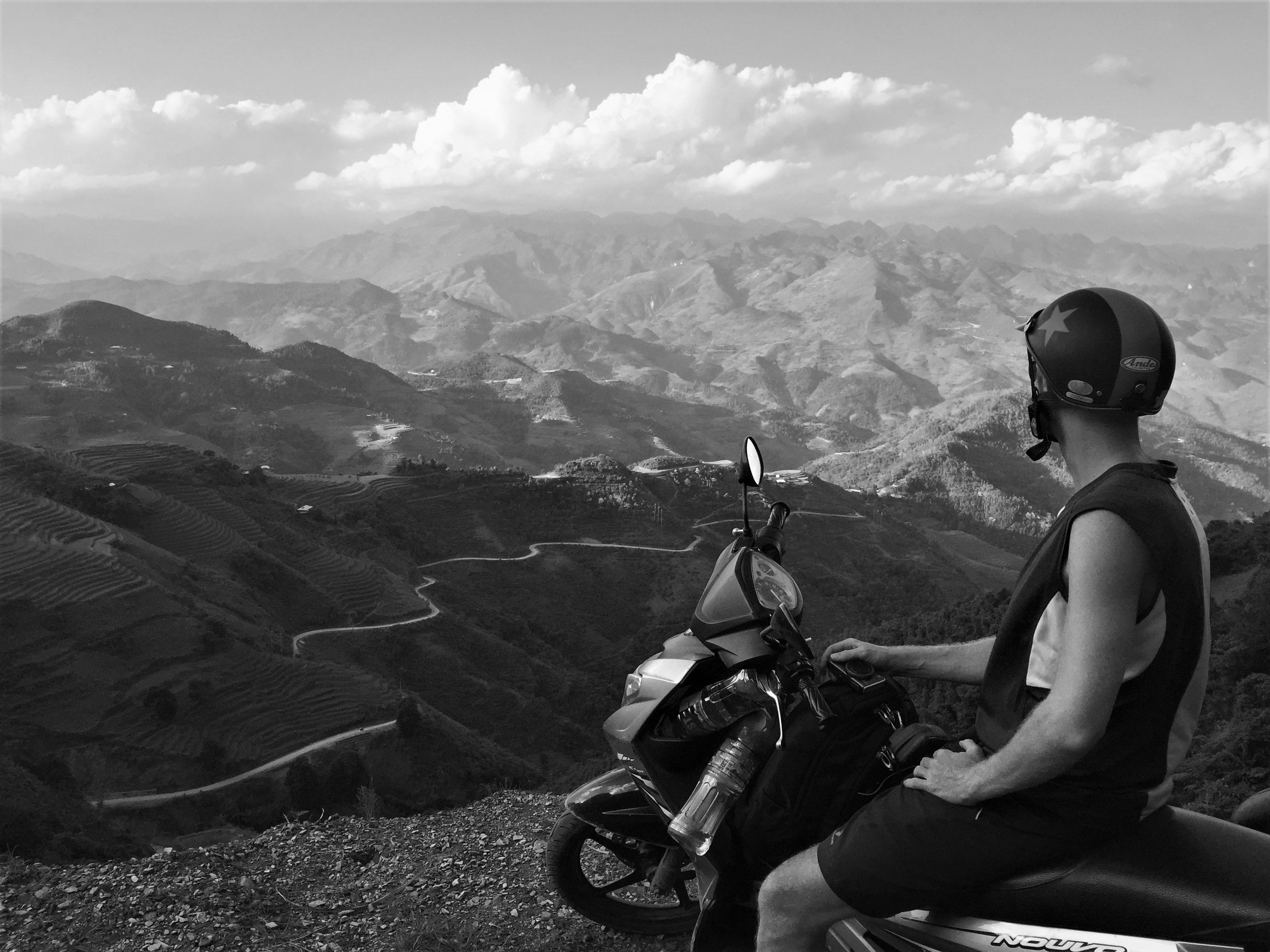 Ha Giang Loop: Extreme North Motorbike Guide
Ha Giang Loop: Extreme North Motorbike Guide
The Ha Giang Loop route is renowned for its magnificent landscapes.
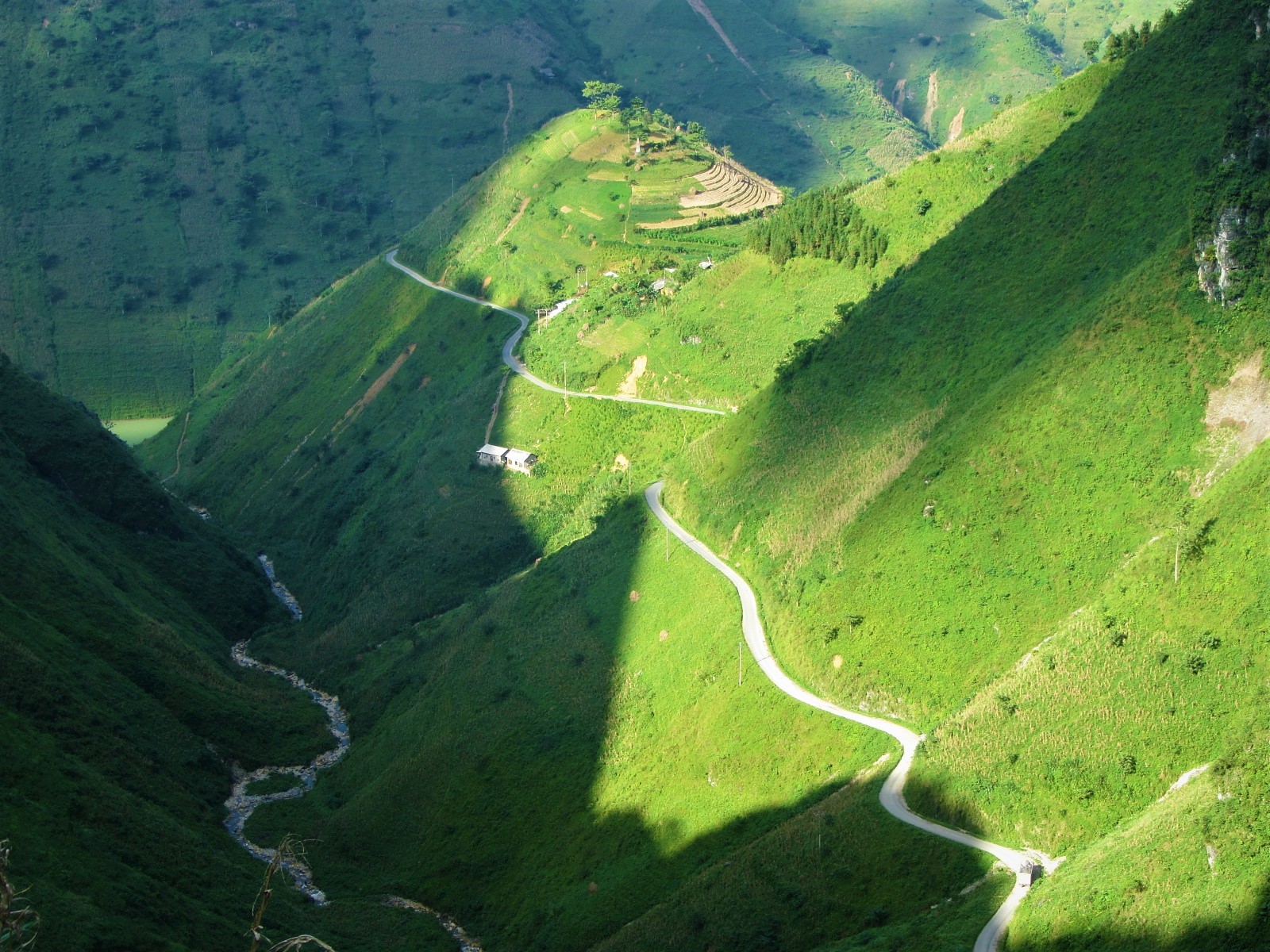 Ha Giang Loop: Extreme North Motorbike Guide
Ha Giang Loop: Extreme North Motorbike Guide
The captivating beauty along the Ha Giang Loop offers memorable travel experiences.
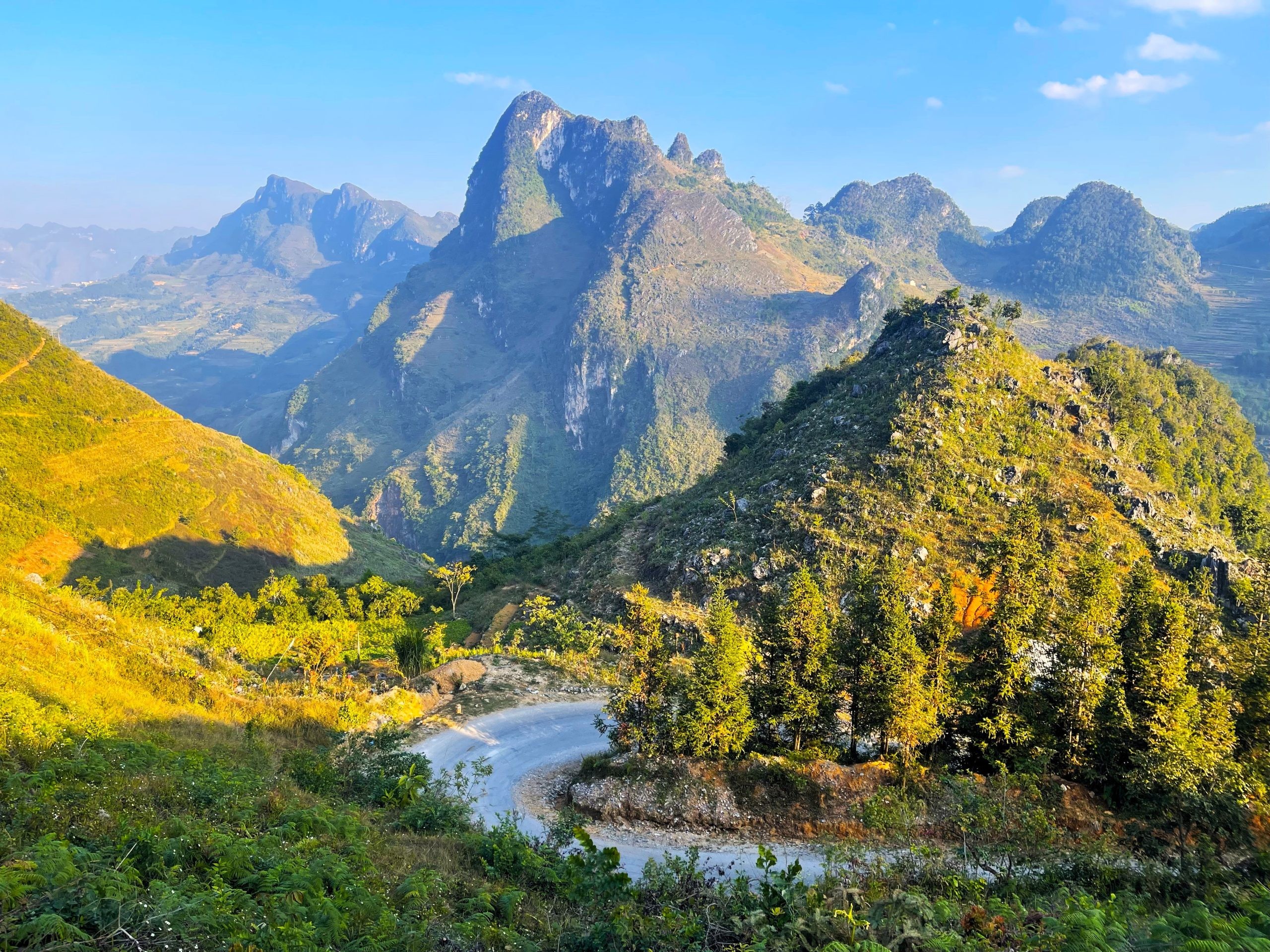 Ha Giang Loop: Extreme North Motorbike Guide
Ha Giang Loop: Extreme North Motorbike Guide
The terrain in Ha Giang is primarily rocky and mountainous.
Many mountain passes in Ha Giang offer outstanding and scenic viewpoints.
 Ha Giang Loop: Extreme North Motorbike Guide
Ha Giang Loop: Extreme North Motorbike Guide
The Nho Quế River has carved a path through limestone mountains at Tu Sản Gorge.
The route to Du Gìa features landscapes evocative of Tolkien novels.
A panoramic view of Hà Giang City from the summit of Núi Cấm hill.
 Ha Giang City, street food, Vietnam
Ha Giang City, street food, Vietnam
Enjoy bánh cuốn at a roadside eatery in Hà Giang City.
The statue of Hồ Chí Minh in the central square of Hà Giang City.
The diverse food options in Hà Giang City cater to various tastes.
 The Ha Giang Loop: Extreme North Vietnam
The Ha Giang Loop: Extreme North Vietnam
Bắc Sum Pass offers breathtaking views between Hà Giang city & Tam Sơn.
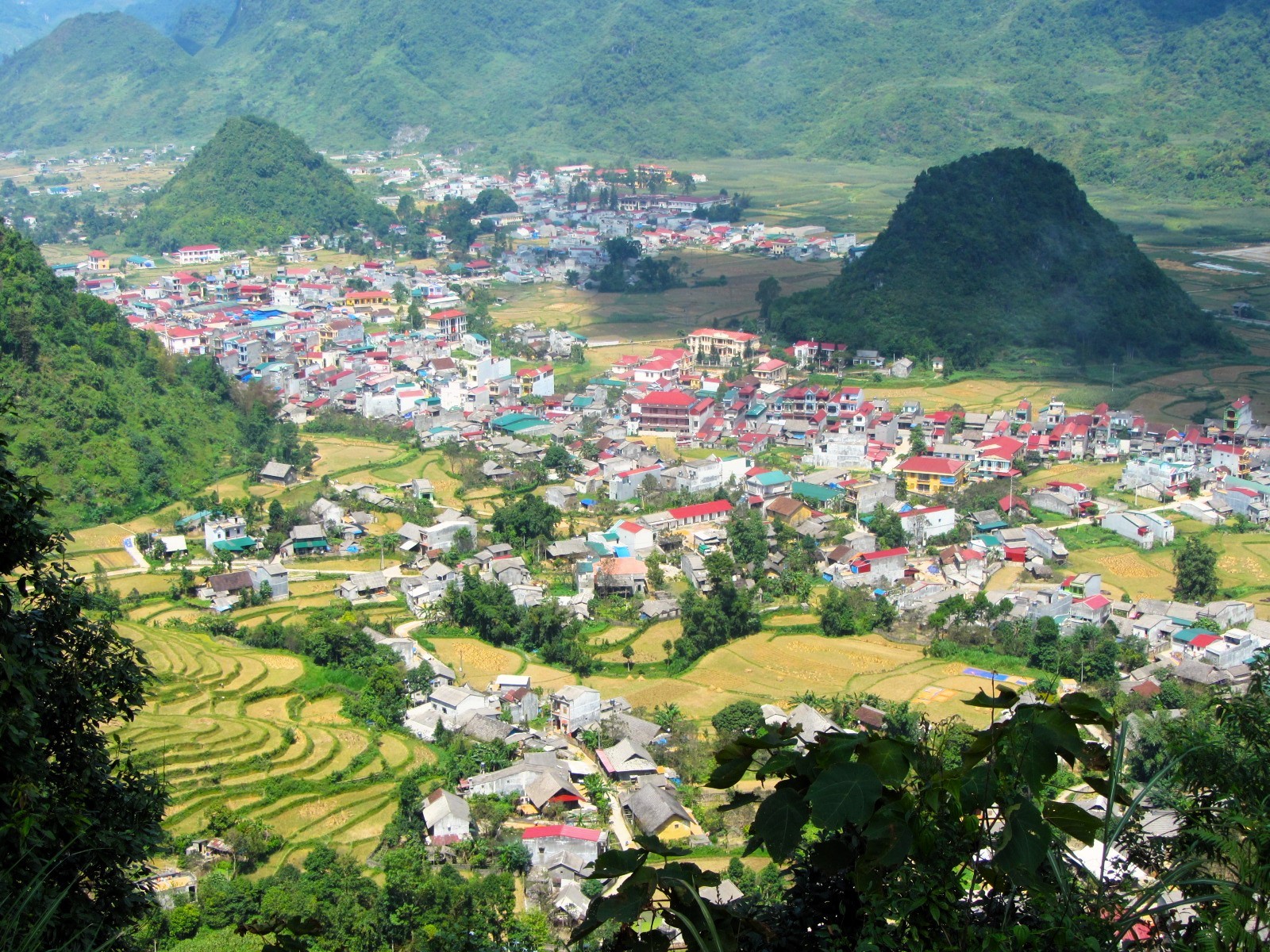 Tam Sơn (Quản Bạ), Ha Giang, Vietnam
Tam Sơn (Quản Bạ), Ha Giang, Vietnam
A splendid view of Tam Sơn town from Heaven’s Gate Pass.
Pumpkins and squash adorn a local home, highlighting local produce.
A woman carries crops in a woven basket, showcasing traditional transport.
The ‘Fairy Bosoms’ twin hills are located near Tam Sơn.
Children enjoy the cool waters of the Miện River.
 Miện River, Ha Giang, Vietnam
Miện River, Ha Giang, Vietnam
The longer route to Yên Minh passes through a valley along the Miện River.
 Selling local produce on the Ha Giang Loop, Vietnam
Selling local produce on the Ha Giang Loop, Vietnam
Selling local produce on the Ha Giang Loop attracts tourists.
 Ha Giang Loop, Vietnam
Ha Giang Loop, Vietnam
The landscape on the longer road between Tam Sơn and Yên Minh.
 Ha Giang Loop, Vietnam
Ha Giang Loop, Vietnam
The road winds between limestone karsts beyond Yên Minh.
Dốc Thẩm Mã Pass winds beautifully up the slope.
 Ha Giang Loop, Vietnam
Ha Giang Loop, Vietnam
Limestone walls enclose sections of the road, making for narrow drives.
 Chin Khoanh (9 turn) pass, Ha Giang
Chin Khoanh (9 turn) pass, Ha Giang
The 9-Turn Pass offers incredible panoramic views.
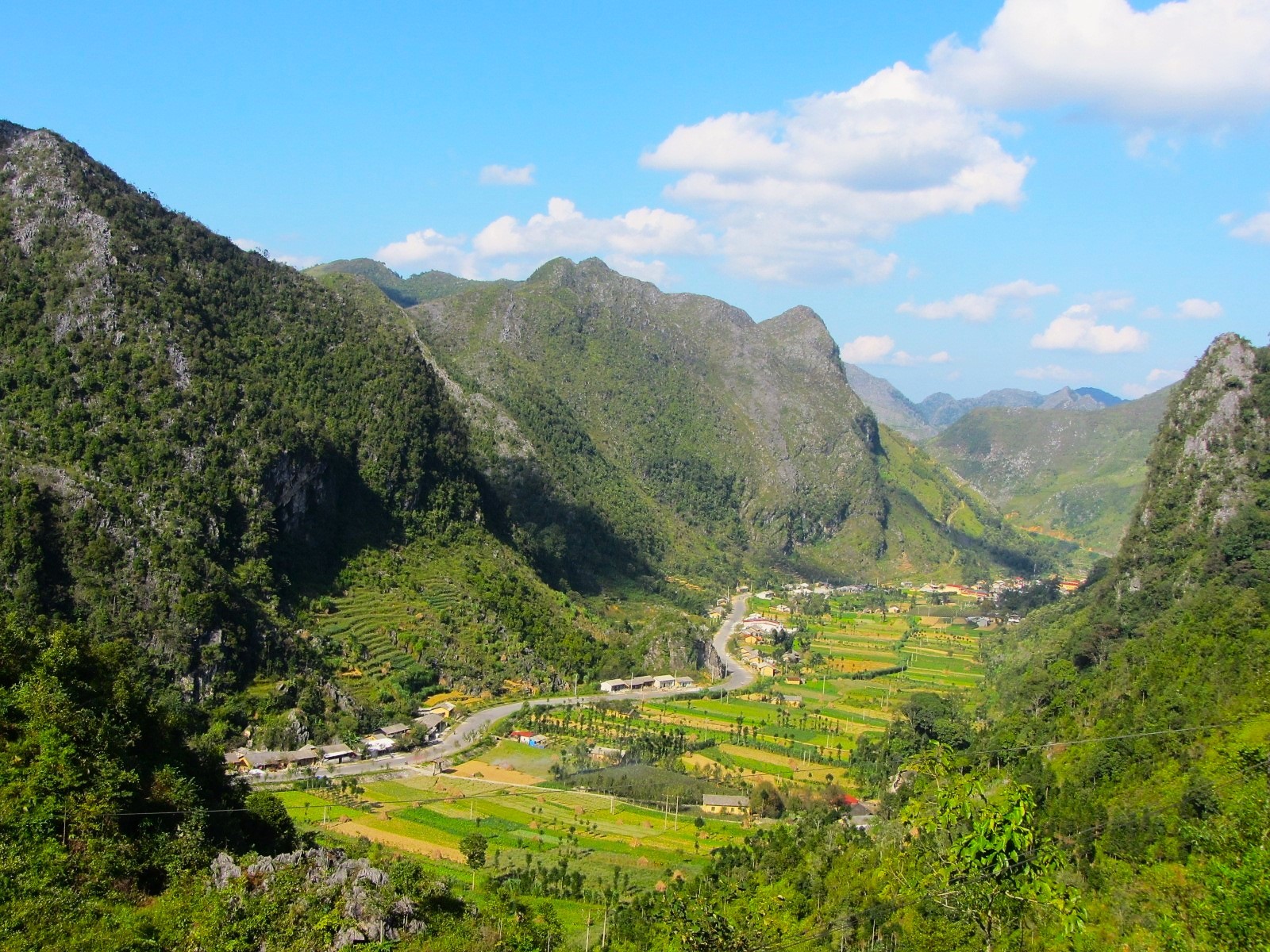 Ha Giang Loop, Vietnam
Ha Giang Loop, Vietnam
Spectacular scenery between Yên Minh & Lũng Cú.
 Hmông King Palace, Ha Giang
Hmông King Palace, Ha Giang
The Hmông King Palace features unique architectural details.
 Lũng Cú
Lũng Cú
Lũng Cú Tower is often referred to as ‘the north pole’.
Homestays at Lô Lô village provide great experiences.
The landscape on the Đồng Văn Karst Plateau is breathtaking.
A charming cafe in the old quarter of Đồng Văn.
Đồng Văn town offers views from the French fort.
 Hmong King Palace, Ha Giang
Hmong King Palace, Ha Giang
The Hmông King Palace exhibits unique architecture.
The QL4C route offers limestone magic.
Đồng Văn is a town known for tourism.
The Water God shrine is a place of reverence.
The journey to Đồng Văn provides stunning vistas.
Mã Pí Lèng Pass is one of Vietnam’s extraordinary roads.
Enjoy panoramic views high above the Nho Quế River.
The Skywalk clings to the cliffs.
The boats sailing through Tu Sản Gorge can be viewed from the Skywalk.
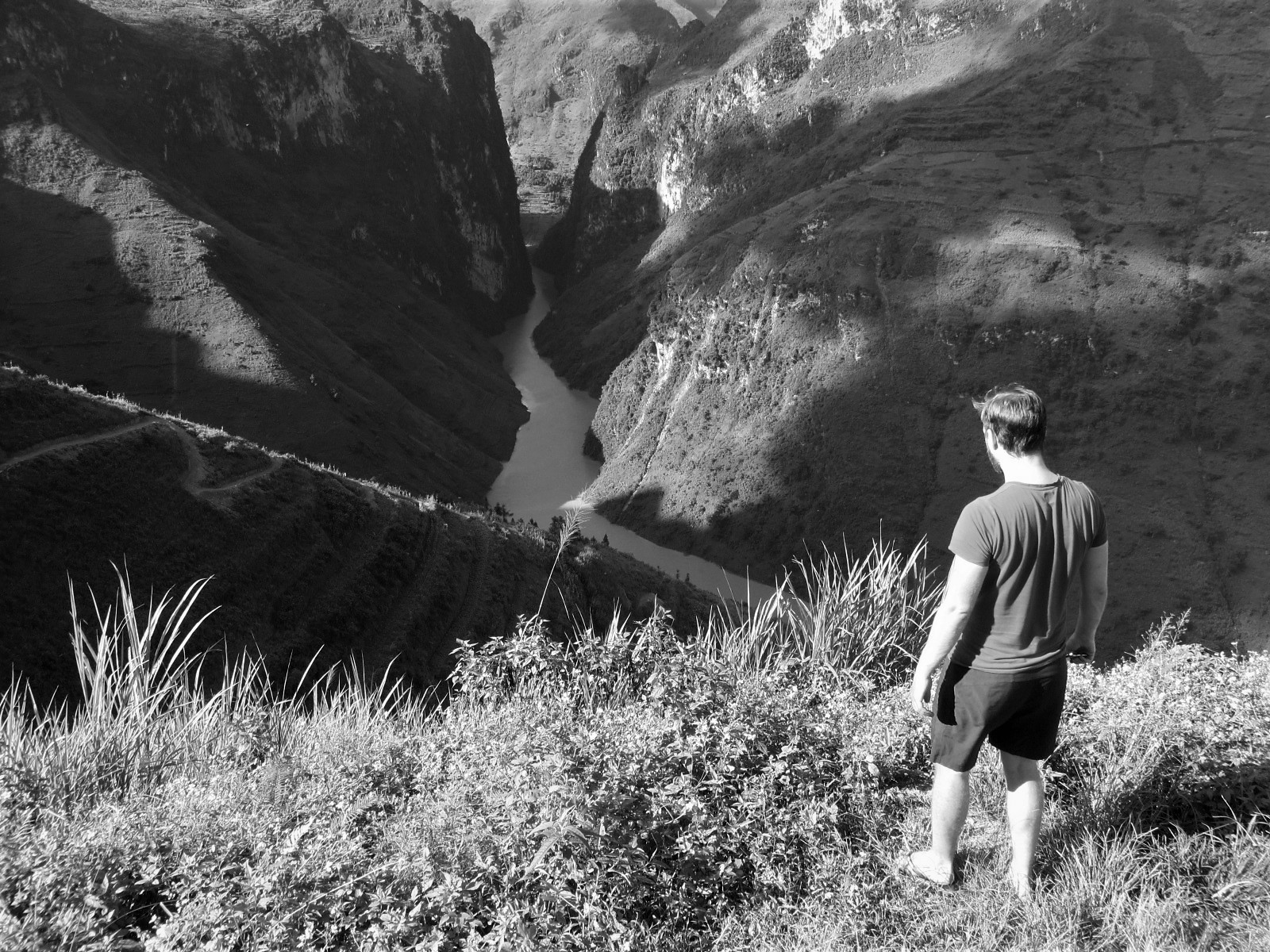 Tu Sản Gorge, Ha Giang, Vietnam
Tu Sản Gorge, Ha Giang, Vietnam
Tu Sản Gorge from the Mã Pí Lèng Pass offers stunning views.
The view from the Mã Pí Lèng Pass is iconic.
 Meo Vac, Ha Giang, Vietnam
Meo Vac, Ha Giang, Vietnam
Mèo Vạc nestled under limestone peaks.
DT217 features a bamboo raft ferry.
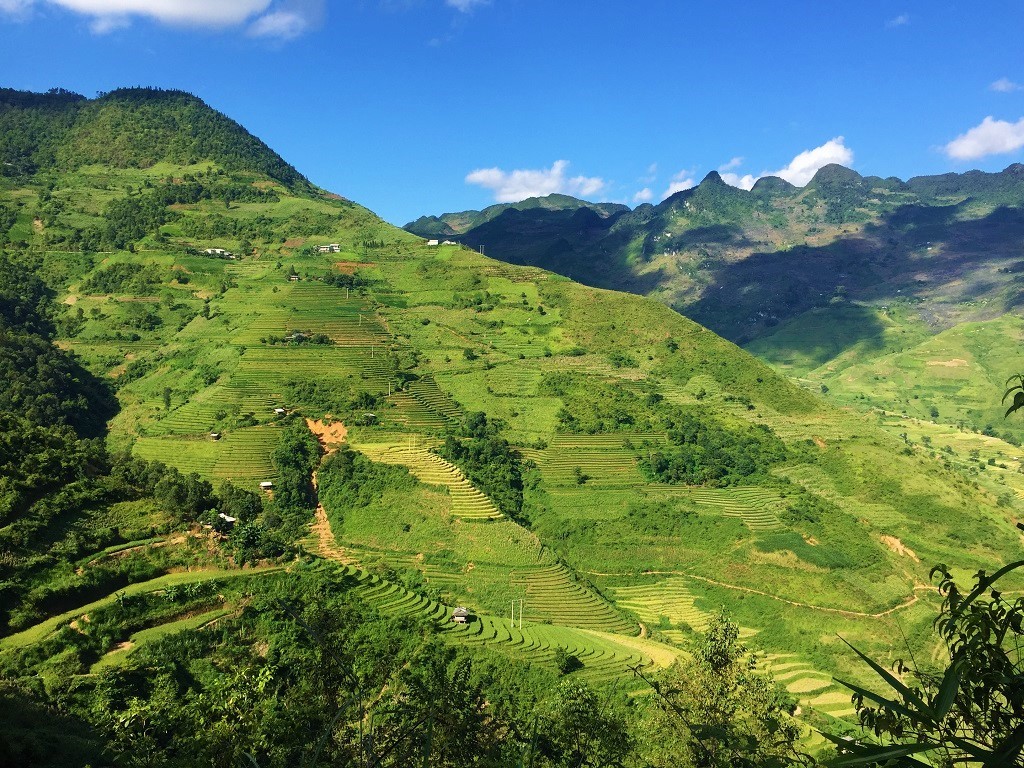 Meo Vac, Ha Giang Loop
Meo Vac, Ha Giang Loop
The road QL4C between Mèo Vạc and Bảo Lạc showcases rice terraces.
The stark beauty of road DT182/DT176 between Mèo Vạc and Mậu Duệ.
The Nho Quế River crossing on a raft is essential.
The route towards Bảo Lạc can be challenging.
 Rice terraces, Meo Vac, Ha Giang Loop
Rice terraces, Meo Vac, Ha Giang Loop
Rice terraces on road QL4C heading south of Mèo Vạc.
The DT176 offers one incredible view after another.
The contours echo the terraced fields.
Du Gìa is overshadowed by towering peaks.
The ruins of the French fort are perched atop a hill.
Du Gìa offers homestays that are inviting and remote.
Homestays provide a base for exploration.
DT181 west from Du Gìa offers remarkable vistas.
The A Boong Waterfall is picturesque.
DT176 near Du Gìa offers views that are awe-inspiring.



